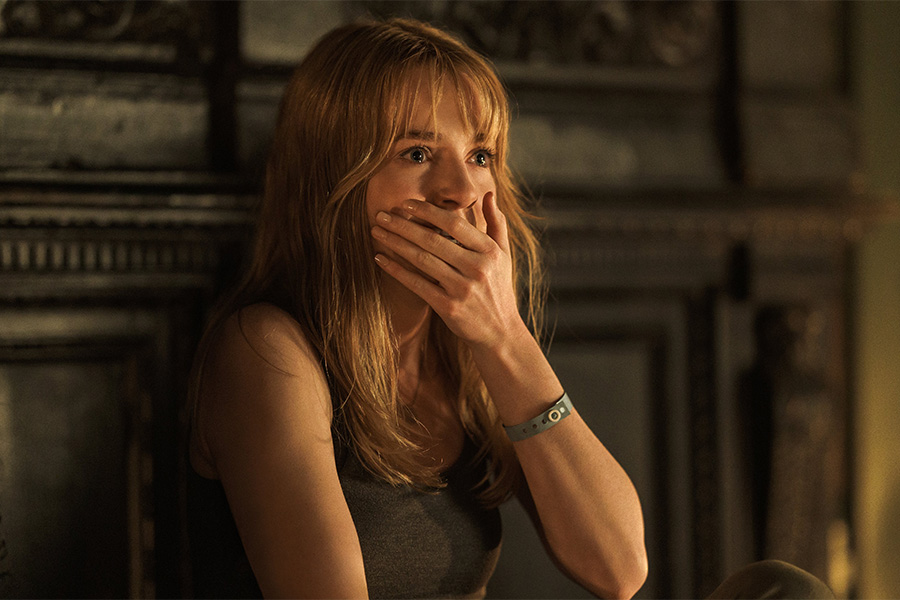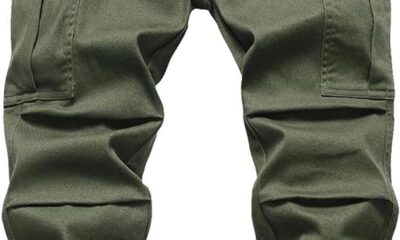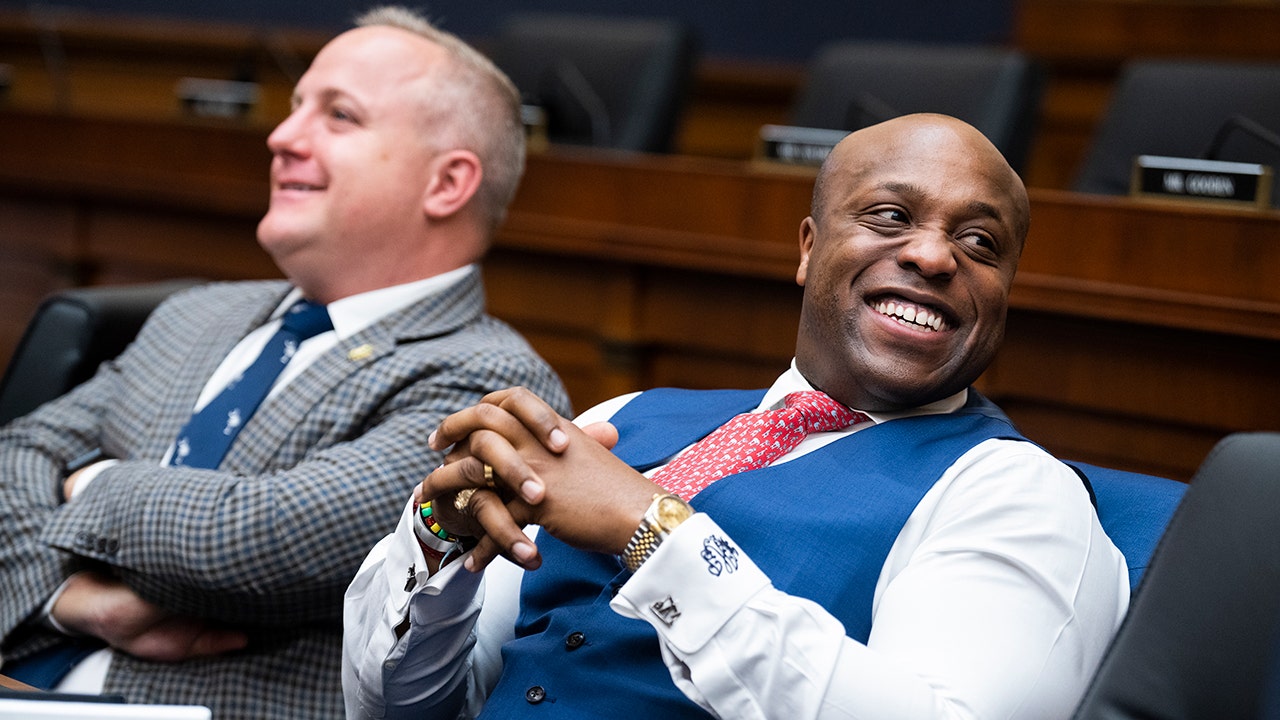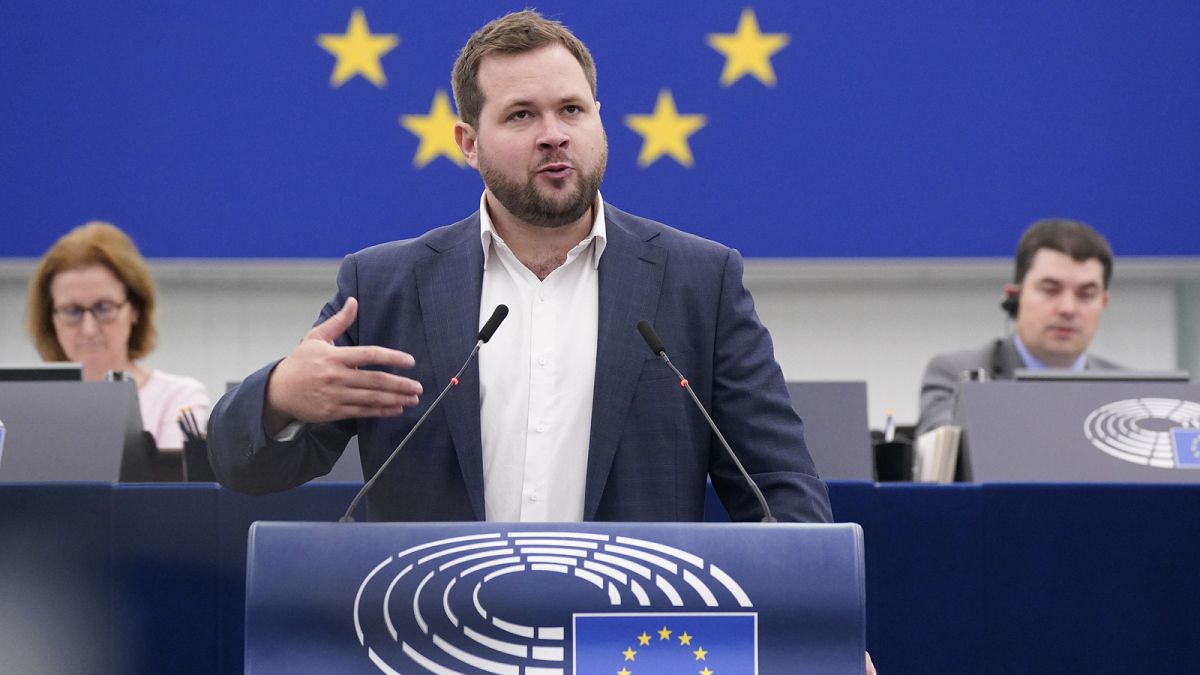Science
Opioid Settlement Money Is Being Spent on Police Cars and Overtime

After years of litigation to hold the pharmaceutical industry accountable for the deadly abuse of prescription painkillers, payments from what could amount to more than $50 billion in court settlements have started to flow to states and communities to address the nation’s continuing opioid crisis.
But though the payments come with stacks of guidance outlining core strategies for drug prevention and addiction treatment, the first wave of awards is setting off heated debates over the best use of the money, including the role that law enforcement should play in grappling with a public health disaster.
States and local governments are designating millions of dollars for overdose reversal drugs, addiction treatment medication, and wound care vans for people with infections from injecting drugs. But law enforcement departments are receiving opioid settlement money for policing resources like new cruisers, overtime pay for narcotics investigators, phone-hacking equipment, body scanners to detect drugs on inmates and restraint devices.
“I have a great deal of ambivalence towards the use of the opioid money for that purpose,” said Chester Cedars, chairman of Louisiana’s advisory opioid task force and president of St. Martin Parish. The state’s directives say only “law enforcement expenditures related to the opioid epidemic,” added Mr. Cedars, a retired prosecutor. “That is wide open as to what that exactly means.”
On Monday, 133 addiction medicine specialists, legal aid groups, street outreach groups and other organizations released a list of suggested priorities for the funds. Their recommendations include housing for people in recovery and expanding access to syringe exchange programs, personal use testing strips for fentanyl and xylazine, and medication that treats addiction.
They expressly stated that no funds “should be spent on law enforcement personnel, overtime or equipment.”
“Law enforcement already gets a lot of funding, and I’m sure they would say it’s never enough,” said Tricia Christensen, an author of the proposed priorities, who is the policy director at Community Education Group, which has been tracking opioid settlement money across Appalachia. But the opioid money, she said, “is really unique.”
Groups that monitor opioid settlements use various criteria to estimate the total payout. But even employing the most conservative tabulation, the final amount could well be north of $50 billion when pending lawsuits are resolved, notably the multibillion-dollar Purdue bankruptcy plan, which the Supreme Court temporarily paused last week.
At first glance, that looks like a fabulous trove of money. In reality, it will be parceled out over 18 years and is already dwarfed by the behemoth dimensions of the opioid crisis, now dominated by illicit fentanyl and other drugs.
The spectacle of states as well as thousands of cities, counties and towns all struggling to determine the most effective uses of these desperately needed funds is raising many questions.
Underlying the wrangling is a push for greater transparency in awarding the money and a determination not to repeat the mistakes of the Big Tobacco settlement 25 years ago. State governments have used most of the $246 billion from tobacco companies to plug budget holes and pay for other projects, and reserved relatively little to redress nicotine-related problems.
Now, states and local governments have committees to determine appropriate allocation of the opioid money. Sheriffs and police officials comprise less than a fifth of the members on those task forces, according to a recent analysis by KFF Health News, Johns Hopkins University and Shatterproof, a national nonprofit that focuses on addiction.
But public sentiment in many communities favors ridding the streets of drug dealers as a means of abating the crisis.
When Samuel Sanguedolce, the district attorney of Luzerne County in Pennsylvania, presented his budget to the County Council in November, he made a pitch for some of the county’s settlement money, about $3.4 million so far.
“With 10 more detectives, I could arrest those cases around the clock,” he said, referring to drug dealers. “I think this is a good way to use money that resulted from this opioid crisis to assist those detectives without putting it on the taxpayers.”
“And I’ve asked not just for detectives,” he continued. “But hiring people, of course, costs money, in the way that they need guns and vests and computers and cars.”
In many areas of the country, the lines between law enforcement and health care can be somewhat blurred: Police and sheriffs’ departments are also emergency responders, trained to administer overdose reversal drugs. Louisiana is dedicating 20 percent of its opioid money to parish sheriffs.
Sheriff K.P. Gibson of Acadia Parish, who represents sheriffs on Louisiana’s opioid task force, said that he intended to use the $100,000 his department is set to receive for “medical needs” of people in the jail, including various opioid treatments and counseling. The goal, he said, is to help inmates become “productive citizens within our community,” once they are released.
Public health officials and addiction treatment specialists are also concerned about another use of the money: grants for faith-based rehab programs that prohibit federally approved medications like Suboxone and methadone, which blunt cravings for opioids.
“I would be open to a faith-based cancer program, but not one that doesn’t let you take effective medicines to treat the cancer,” said Dr. Joshua Sharfstein, a professor at Johns Hopkins Bloomberg School of Public Health, which has released its own guidance principles for the settlement funds.
Throughout the years of negotiating opioid settlements, lawyers for states, tribes and local governments and those defending drug distributors, manufacturers and pharmacy chains struggled to avoid the pitfalls that emerged from the Big Tobacco litigation.
This time, local governments have struck agreements with state attorneys general over the allocation of the money. Legislatures are largely excluded from most of the funds.
Johns Hopkins praised Rock County, Wis., as a jurisdiction that strove to get a full picture of local needs for the money: It put together a working group to review evidence-based literature and conducted surveys and meetings to elicit community suggestions.
In North Carolina, county governments receive 85 percent of the funds, which have reached nearly $161 million so far. Having signed onto the core principles worked up with the attorney general, the counties have great discretion in spending their allotments.
“When you look at who addresses the issues of the opioid epidemic, it’s addressed locally by E.M.S., social services and jails. Those are all county functions in North Carolina, so that’s why it made sense for them to get the bulk of the resources,” said Josh Stein, the North Carolina attorney general, who helped negotiate the national opioid settlements.
Each county is establishing its own priorities. Stanly County, he said, is setting up teams to reach people who have just survived overdoses, hoping to connect them with services. Mecklenburg County has directed some of its funding for post-recovery education and job-training programs.
Such uses can help to lift a community stricken by addiction, said Ms. Christensen, whose group monitors opioid settlements for 13 states. “I really subscribe to the idea that overdoses are often ‘deaths of despair’ — that the reason many folks spiral into chaotic drug use has a lot to do with what has happened to them and their lack of opportunities,” she said. “So how can we invest in the community to prevent that from happening generation after generation? That’s why I think community input is so important in this process.”
The groups that released the new set of priorities cited examples of promising use of the funds. Michigan’s plans include adding rooms in hospitals so that new mothers can stay with infants born with neonatal abstinence syndrome. Kentucky is giving $1 million to four legal aid groups to represent people with opioid-related cases.
“I was blown away by that,” said Shameka Parrish-Wright, executive director of VOCAL-KY, a community group that worked on the priorities documents. Ms. Parrish-Wright, a former candidate for Louisville mayor who had been addicted to drugs, homeless and incarcerated, added: “Those legal entities are really helpful in making sure we deal with paraphernalia charges and evictions. People coming out of treatment are sometimes discriminated against because of those charges and can’t get housing or jobs.”
VOCAL-KY has not applied for settlement money but works closely with groups that do. Its members attend meetings held by Kentucky’s opioid task force. “Knowing that Black and brown and poor white communities are dealing with it the worst, we pushed them to have another town hall in those communities,” Ms. Parrish-Wright said.
With Big Tobacco’s cautionary tale shadowing these debates, the issue of accountability looms. Who ensures that grantees spend their money appropriately? What sanctions will befall those who color outside the lines of their grants?
So far, the answers remain to be seen. Christine Minhee, a lawyer who runs the Opioid Settlement Tracker, which analyzes state approaches to spending the funds, noted that on that question, the voluminous legal agreements could be opaque.
“But between the lines, the settlement agreements themselves imply that the political process, rather than the courts, will bear the actual enforcement burden,” she said. “This means that the task of enforcing the spirit of the agreement — making sure that settlements are spent in ways that maximize lives saved — is left to the rest of us.”

Science
What you need to know about the bird flu outbreak, concerns about raw milk, and more

There is a bird flu outbreak going on. Here is what you need to know about it:
What is bird flu?
Bird flu is what’s known as a highly pathogenic avian influenza virus. The “highly pathogenic” part refers to birds, which the virus is pretty adept at killing. In virology speak, the virus is of the Influenza A type, and is called H5N1. The “H” stands for the protein Hemagglutinin (HA), of which there are 16 subtypes (H1-H16). The “N” is short for Neuraminidase (NA), of which there are 9 subtypes (N1-N9). There are many possible combinations of HA and NA proteins. The two known type A human influenza viruses are H1N1 and H3N2. (Two additional subtypes, H17N10 and H18N11, have been identified in bats).
When did this bird flu first appear?
The current strain of H5N1 circulating the globe originated in 1996, in farmed geese living in China’s Guangdong province. It quickly spread to other poultry and migrating birds. By the early 2000s, it had spread across southern Asia. By 2005, it was observed in the Middle East, Africa and Europe. In 2014, it showed up in North America, but appeared to peter out here while it still raged in Europe, the Middle East and Africa. In 2021, it showed up in wild birds migrating off Canada’s Atlantic coast. Since then, it has spread across North and South America.
What kinds of animals does bird flu effect?
Birds are the primary carriers and victims of the virus. Across the globe, hundreds of millions of wild and domestic birds have died. Since 2021, hundreds of U.S. poultry farms have had to “depopulate” millions of birds after becoming infected, presumably from sick, migrating wild birds. The virus is highly contagious among birds and has a nearly 100% fatality rate. Mammals, too have been infected and died. In most cases, these are scavenging or predatory animals that ate sick birds — and the virus has died in these animals and not become contagious between them. So far, 48 species of mammals have become infected. However, there have been a few cases in which it appears the virus may have spread between mammals, including on European fur farms, on a few South American beaches where elephant seals came to roost, and now among dairy cattle in the United States.
Can humans get bird flu?
Since 2003, when the virus first started spreading through southern Asia, there have been 868 cases of human infection with H5N1 reported, of which 457 were fatal — a 53% case fatality rate. There have been only two cases in the U.S. In 2022, a poultry worker was infected in Colorado and suffered only mild symptoms, including fatigue. In 2024, a dairy worker was infected in Texas and complained only of conjunctivitis, or pink eye.
Why is everyone paying attention to dairy cows?
On March 25, 2024, officials announced that dairy cows in Texas had been infected with bird flu. Since then, the virus has been found in 36 herds across nine states. There are no known cases in California. It is believed that there was a single introduction of the virus from wild bird exposure (either by passive exposure, or maybe from eating contaminated feed), that probably occurred in December in Texas. The virus has since been detected in milk. A study conducted by federal researchers found that 1 in 5 milk samples collected from retail stores had the virus. It is believed that the virus may be passing between cows and that there may be cows that show no symptoms. For the most part, it seems dairy cows only suffer mild illness when infected, and milk production slows. They clear the virus after a few weeks.
Is it safe to drink milk?
Yes — if it is pasteurized milk. Federal officials say the virus they have detected in pasteurized milk samples is inactive and will not cause disease. In the case of raw milk, they urge people to avoid it. That’s because they have found high viral loads in raw milk samples. In addition, studies of barn cats that have consumed raw milk have reported severe consequences. In one cluster of 24 barn cats, half of them died after consuming raw milk, with others suffering blindness, neurological distress and copious nasal discharge. The virus has not been found in sour cream or cottage cheese.
What’s the situation with wastewater?
As health officials and researchers scramble to understand how widespread avian flu is in cattle and the environment, they are analyzing municipal wastewater. One team from Emory University and Stanford University looked at 190 wastewater treatment sites in 41 states. They found a surge of Influenza A virus in the last several weeks at 59 sites. This does not necessarily mean there is bird flu at these sites. However, in places where the team has gone to investigate — including three in Texas where they knew there was H5N1 in dairy cattle — they have found bird flu. Influenza A is generally seasonal in humans — peaking from late fall to early spring. The surge the researchers noticed — including at several sites in California — started after the flu season had died down. Researchers in Texas have also detected H5N1 in the wastewater of nine of 10 cities they tested, all located in Texas. The CDC is also monitoring for Influenza A at roughly 600 sites across the nation.
Science
Doctors saw younger men seeking vasectomies after Roe vs. Wade was overturned
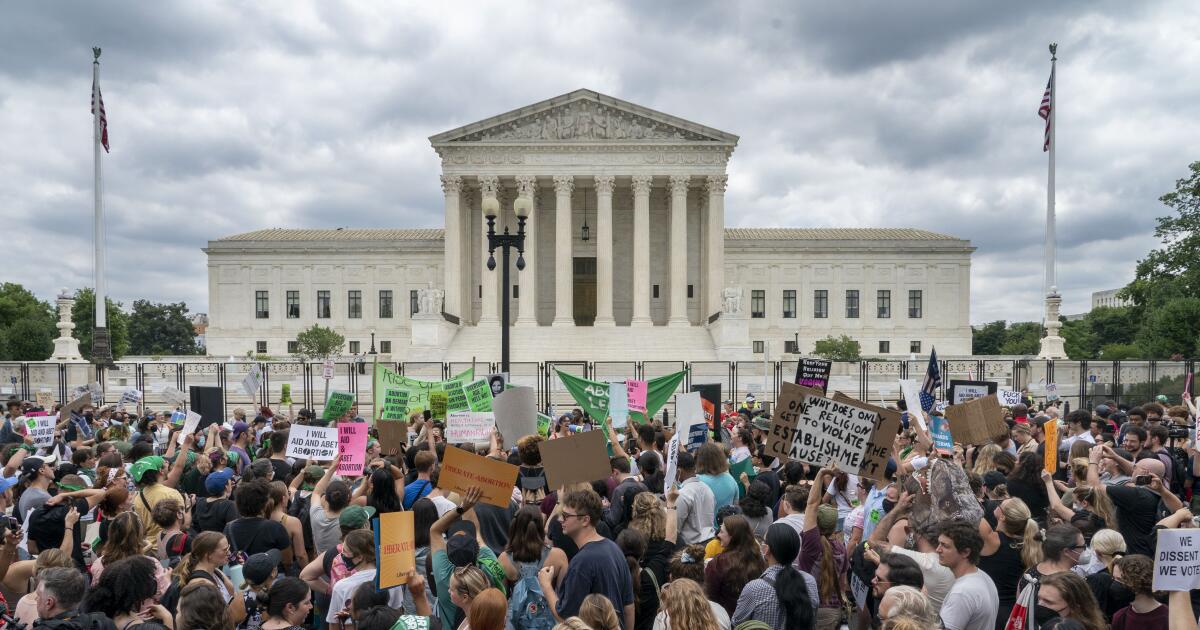
Kori Thompson had long wrestled with the idea of having a child.
The 24-year-old worried about the world a kid would face as climate change overtook the globe, fearing the environmental devastation and economic strain that could follow. He had been thinking about getting a vasectomy ever since he learned about the sterilization procedure from a television show.
But “the thing that actually triggered it was the court decision,” Thompson said.
After the Supreme Court overturned Roe vs. Wade nearly two years ago, paving the way for states to usher in new restrictions on abortion, doctors started seeing more young adults seeking vasectomies or getting their tubes tied, emerging research has found.
An analysis by University of Utah researchers, released as an abstract in the Journal of Urology, found that after Dobbs vs. Jackson Women’s Health Organization, a rising share of vasectomy patients were under the age of 30.
That percentage went from 6.2% to 9.8% after the Supreme Court decision, based on their analysis of a national database that includes hundreds of millions of patients.
Among the young patients who pursued the procedure is Thompson, who decided to get a vasectomy in the aftermath of the court ruling. In Georgia where he lives, abortion is illegal roughly six weeks into a pregnancy — a point before some people may learn that they are pregnant.
“If it’s effectively illegal,” Thompson said, “then I felt that this was necessary.” His girlfriend also disliked the effects of hormonal birth control, “so now I’ve decided to go on permanent birth control. It’s way easier.”
The University of Utah researchers found that before the Supreme Court ruling, vasectomy rates were consistently higher in states categorized as “hostile” or “illegal” for abortion by the Center for Reproductive Rights, compared to states that were not as restrictive. The same was true after the ruling.
Yet researchers also found an overall uptick in vasectomy rates after the Dobbs decision — both in states where abortion is heavily restricted and those where it is not.
In California, where state leaders have vowed to protect abortion rights, the rate of men getting vasectomies rose after the court decision, from roughly 7 to 13 per 100,000 potential patients, the Utah team found.
“We’re just seeing an overall increase in vasectomies — regardless of political climate” in each state, said Dr. Jessica Schardein, a urologist at the University of Utah. Schardein said the Supreme Court ruling and increased marketing for vasectomies may have gotten more people thinking about the procedure.
“People in general, even if they don’t have a uterus, are taking responsibility for their reproductive health,” Schardein said.
Her team also examined tubal sterilizations — a medical procedure often called “getting your tubes tied,” performed on the fallopian tubes connected to the uterus — and found that after the court decision, there was an increase in the percentage of patients ages 18 to 30 among those undergoing the procedure.
In Riverside County, Jacob Snow decided to get a vasectomy after the birth of his third child, concluding it was a safer option than his wife had for sterilization. “There’s no reason why all the blame and stress and trying to stop a pregnancy should be placed on the female when I can stop it at my end,” the 28-year-old said.
Even though Snow was already a parent, the doctor balked because of his age, he said. “They said I might change my mind in the future,” Snow recalled. “They flat out just refused.”
Vasectomies are intended to be permanent. The surgery may be able to be reversed with other procedures, but physicians caution that doing so is not a guaranteed option.
Snow ultimately found another doctor to do the procedure. Besides the pushback from the first physician, Snow said some men have been aghast when he tells them he had a vasectomy, saying it would make them feel like less of a man. But Snow said he doesn’t “feel that reproducing is how I need to prove that I’m a man.”
The University of Utah findings, presented at the annual meeting of the American Urological Assn., have been echoed in other recent research.
Last month, researchers from the University of Pittsburgh School of Public Health and Boston University published findings in JAMA Health Forum showing “an abrupt increase” in vasectomies and tube tying following Dobbs, with a sharper increase in tubal ligation.
The difference “likely reflects the fact that young women are overwhelmingly responsible for preventing pregnancy and disproportionately experience the health, social and economic consequences of abortion bans,” University of Pittsburgh assistant professor Jacqueline Ellison said in a statement.
Another analysis in the Journal of Urology that included multiple medical centers around the country — including UCLA — found that after the Dobbs decision, the typical patient seeking a vasectomy was younger than before. Researchers also found that an increased share were childless.
There was also a rise in the number of patients consulting doctors about the medical procedure, said Dr. Kara Watts, a urologist at Montefiore Medical Center in New York City — and longer waits to get the surgery after a consultation. If wait times weren’t an issue, Watts said, “the numbers would probably be even more dramatic.”
Researchers detected a similar trend in the UC San Diego health system, where there was a rise in men seeking consultations about vasectomies after the Dobbs decision, as well as increased rates of patients going through with the procedure after their consultations, according to another review presented at the urology meeting.
Even though California has enshrined abortion rights in its state constitution, “I think that vasectomy consultations and completion rates still increased due to the national media coverage on the Supreme Court ruling,” said Dr. Vi Nguyen, one of the authors of the analysis.
And at Ohio State University, urologists surveyed patients about why they chose to get vasectomies and found that after the Dobbs decision, they were more likely to cite concerns about abortion access or say that “they did not want to bring children into the current political climate.”
Other reasons for wanting a vasectomy, such as health concerns, did not change after Dobbs, the survey found. Dr. Jessica Yih, an assistant professor of urology at the Ohio State University, wasn’t surprised.
“Immediately after the Dobbs ruling, many people were extremely concerned about their reproductive rights,” Yih said in an email. “We had a threefold increase in referrals of patients who were wanting to be scheduled to discuss vasectomies and the number of vasectomies performed around this time increased dramatically.”
Abortion has been a sharply contested issue in Ohio, where a law banning abortion after six weeks of pregnancy initially went into effect after the Dobbs ruling. That ban was later put on hold in court, and Ohio voters have since backed protections for abortion access in its state constitution.
“Many patients told us at our clinics that they wanted their vasectomies done as soon as possible due to concerns about restrictions in abortion access,” Yih said.
Science
Want to live to 100? That may depend on your sex

Do you want to live to 100? The path to becoming a healthy centenarian — as opposed to just a centenarian — is surprisingly different for those born as women and men, says social researcher and author Maddy Dychtwald. And it’s never too early to start on the journey, even when you’re young and spry. (We’re talking to you, zoomers.)
As co-founder of Age Wave, a nonprofit think tank focusing on longevity and aging, Dychtwald has been researching these topics for nearly 40 years. In her new book, “Ageless Aging: A Woman’s Guide to Increasing Healthspan, Brainspan, and Lifespan,” Dychtwald addresses the most recent aging picture for women and identifies a holistic plan for longevity. It weaves together science and medicine, psychology and spirituality, as well as financial advice in a research-based guidebook that’s brimming with actionable steps.
“There’s this ripple effect,” Dychtwald says of the lifestyle she recommends for maximizing healthspan — meaning how long you are living in good health, versus how long you are just living. “If you can impact one piece — sleep, nutrition, fitness, having a sense of purpose and connection — it begins to affect the others.” This interview has been edited for length and clarity.

Shelf Help is a new wellness column where we interview researchers, thinkers and writers about their latest books — all with the aim of learning how to live a more complete life.
How is longevity different for women than men?
Woman have actually won the longevity lottery. We live, on average in the United States, six years longer than men. So that’s incredibly positive. But there is a dark side to this. And that is: We women, on average, spend the last 12 to 14 years in declining health. So we are not doing a great job of matching our healthspan to our lifespan. There’s a gendered gap when it comes to healthspan. Why? I don’t know that the answer is clear, even in the minds of scientists. What we do know is that estrogen has protective properties for women. But once their estrogen levels decline, they have more health challenges than men do, as they get older. But it’s something scientists don’t fully understand yet.
If women are 51% of the population, doesn’t it stand to reason that scientists would better understand this by now?
You would think! I think the healthcare system, overall, is well-meaning. But it’s been created by men and as a result, the focus has really been more on men than women. One great example of how women can, as a community, really motivate physicians and researchers and scientists to change is the whole breast cancer issue. Women really spoke out on this and I think, as a result, we’ve seen great strides in research and survival rates and treatment methodologies.
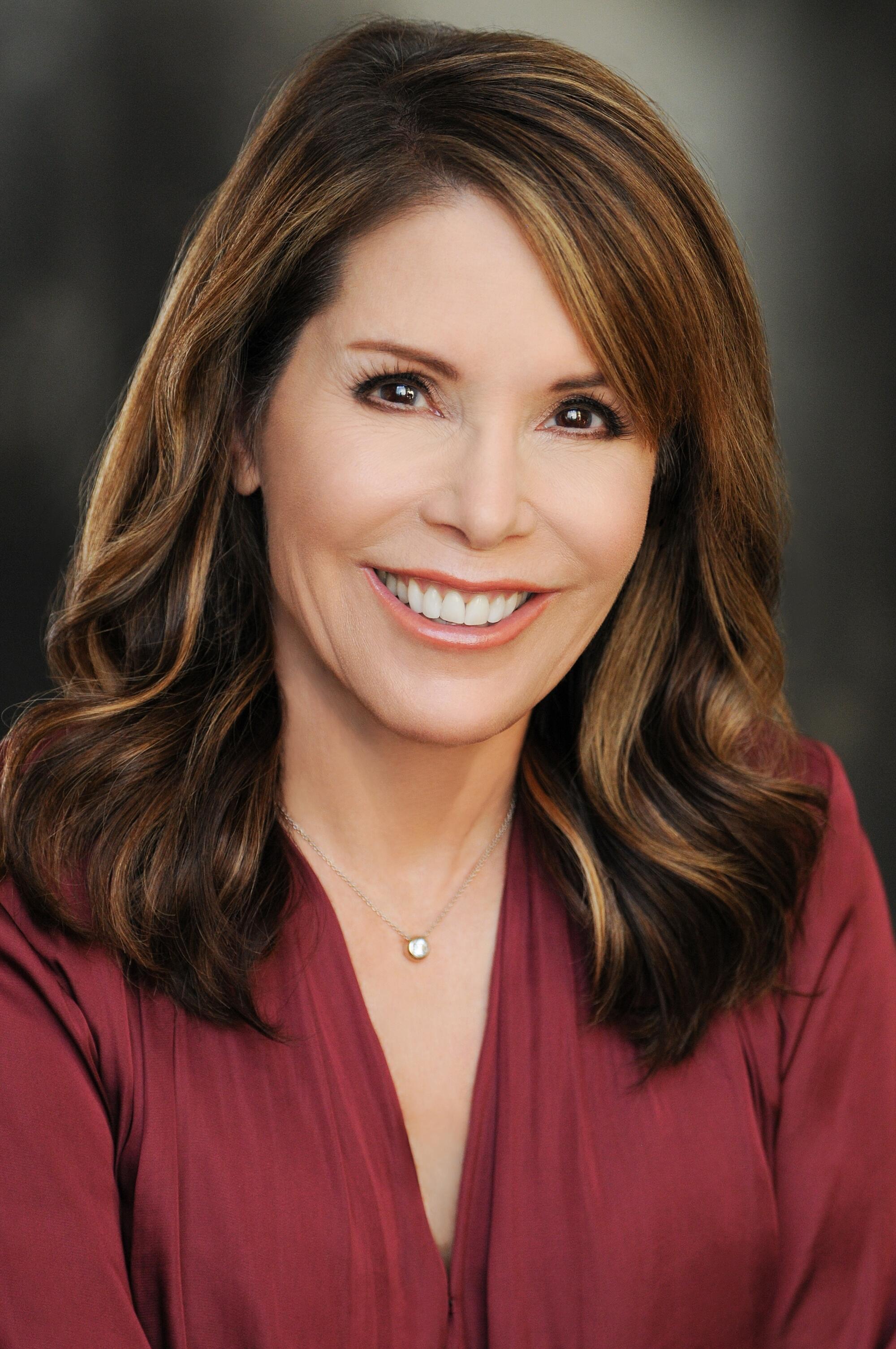
Author Maddy Dychtwald.
(Lisa Keating Photography)
You endured a health challenge, which is one of the things that led to your writing this book. Can you tell us about that?
I’m a big exerciser, it’s how I manage stress. I started getting pain in my hips, to the point where I was limping. I did PT, I got cortisone treatments, I did a variety of things to manage the pain. But it wasn’t solving the problem. Turns out I needed double hip surgery — I was 68, which is young for the condition I had. But they couldn’t see me for months — and I was in excruciating pain. I started researching and learned, from experts in my network, that I needed to get my inflammation levels down. I went on an anti-inflammation diet — I cut out gluten, sugar and dairy — and I found that within six weeks all my pain went away. I thought: “Whoa, there are all these things that we can all do — and they don’t necessarily cost any money — to live better, longer.” I started looking at other things I could do. I worked with a psychiatrist at Harvard who taught me about meditation and affirmations. I was doing precovery, essentially — preparing for my surgery in advance. And it made a difference. This book is the distillation of all that, along with the work I’ve been doing at Age Wave for 40 years.
New research around genetics versus lifestyle choices also informs the book — and your decision to direct it at women. What does the latest research tell us about how to influence our destiny?
We used to just assume that genetics were our destiny. That whatever our genetic package is, that’s kind of the hand that we were dealt. But, in fact, according to the most recent science from Alphabet’s Calico Life Sciences and other research, up to 90% of our health and longevity are literally within our control. And I find that an incredibly empowering piece of information. It gives us almost total agency. I didn’t want to just keep that information to myself, I wanted to share it with the world. There are a lot of books out there on longevity, but there aren’t many that really focus in on women and longevity. And obviously, women and men are really different.
We used to just assume that genetics were our destiny. That whatever our genetic package is, that’s kind of the hand that we were dealt. But, in fact, according to the most recent science … up to 90% of our health and longevity are literally within our control.
— Maddy Dychtwald
During COVID, I was home more than I had been before. There were so many health issues I saw around me and I had an opportunity to really lean into my own sense of purpose. And in order to lean into it in a way that felt good to me, I wanted to [educate] women in their 40s, 50s, 60s and beyond. There are tens of millions of women just in the U.S. in that age group who are starting to feel the aches and pains of getting older, or who are coping with a chronic degenerative disease, or just dealing with the reality of menopause — and who are looking for solutions. I wanted to give women a one-stop resource to clear up the confusion, give them straightforward answers based on science as well as action steps to live better, longer.
You talk about a “holistic recipe” for healthy aging as a woman. What are the ingredients to that — what daily activities, for example, do you incorporate to promote longevity?
There are a lot of books out there on sleep or exercise or nutrition or hormones or having a positive attitude — and by the way, our attitudes toward our own aging can actually add 7½ years to our lifespan — but it’s not just about one thing, it’s all these things working together. They don’t exist in silos.
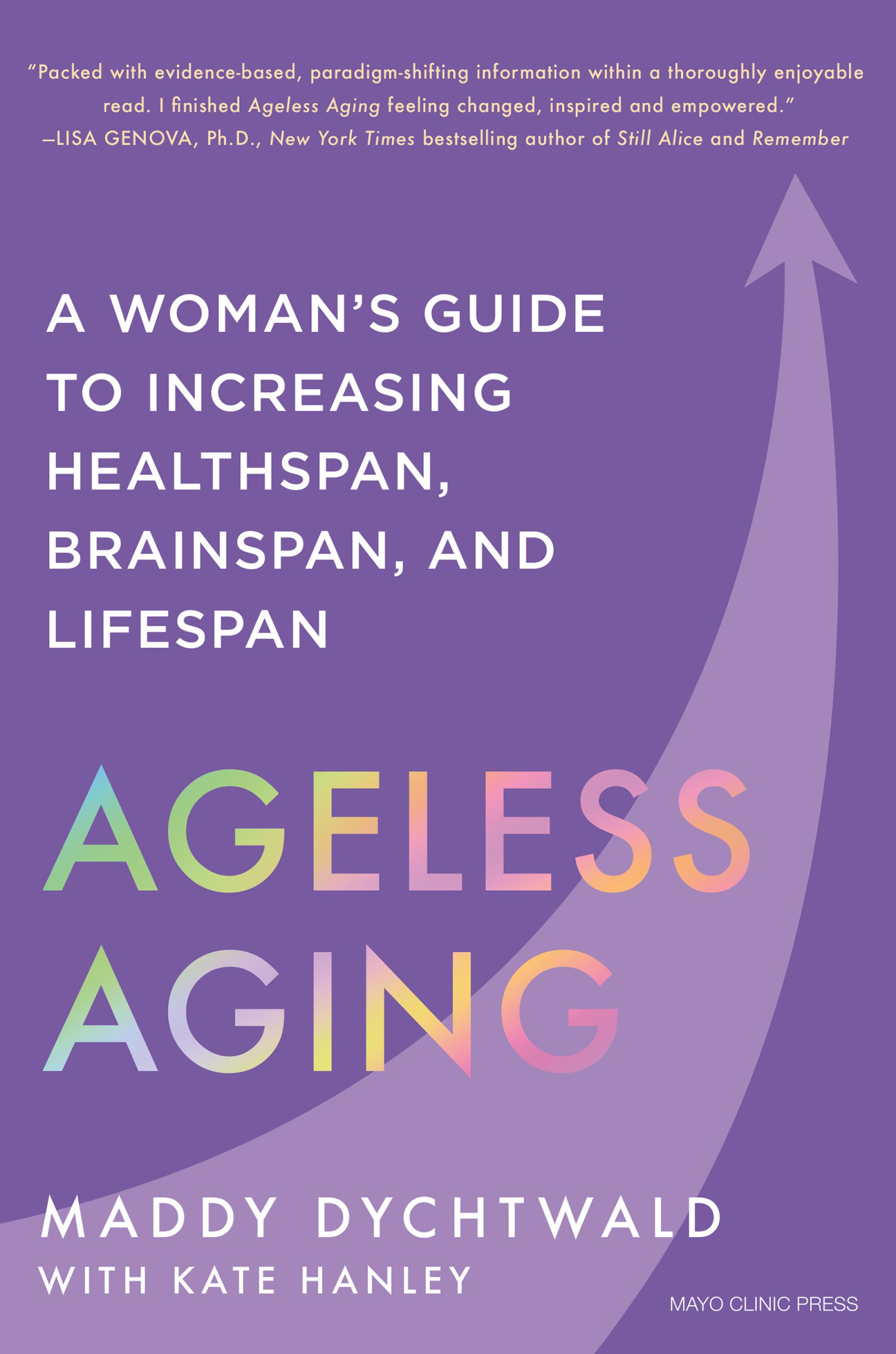
Take finances — there’s a gender pay gap. I encourage all women to take charge of their finances. If you don’t have your financial house in order, chances are it will affect your stress levels, your health, your well-being. And you may not even have the financial well-being to pay for your health — and that’s a scary place to be.
If you exercise effectively, it affects your mood and your stress. That helps with sleep, which helps with cognition and so many other things, including managing your finances. It’s cyclical.
Sleep is such a key ingredient. What do you do to manage that?
Sleep is not my superpower. But I learned there were things I could do. One was to really be mindful of my circadian rhythms; controlling our sleep-wake cycles are very important. I learned that what I did during the day was as important, if not more important, than what I did at night to go to sleep. It’s simple — anyone can do it — and it doesn’t cost a penny. Which is: When you get up first thing in the morning, watch the sun rise for 10 minutes. If it’s already up, get sun on your skin for 10 minutes. I do what I call “stacking my habits.” So at the same time, I do some breathing exercises that help me be calm and energetic simultaneously — what a great way to start my day.
One surprising piece of new research that you cite is that exercise has a bigger impact on health, and staving off brain decline later in life, for woman over men.
Yes. We already know that exercising in the morning is the best time of day to exercise, it brings optimal results, and it’s best on an empty stomach. But brand-new research, in a February 2024 study from the Smidt Heart Institute at Cedars-Sinai, says that women don’t have to exercise as hard, or as long, as men to get optimal results. They can get the same health benefits as men from exercise in less time.
For example, women can reduce their risk of death by 18% by doing 140 minutes of moderate aerobic exercise per week, while men need 300 minutes to achieve the same benefit. Women can also achieve the same survival benefit from moderate to vigorous aerobic exercise, like cycling or brisk walking, after 2½ hours per week, while men need about five hours. And when it comes to building muscle mass, strengthening exercises such as weightlifting or core exercises, women can achieve the same positive benefits after one session weekly while men need three sessions.
TAKEAWAYS
From “Ageless Aging”
You talk about two topics that demand the medical community’s much closer attention. What are they?
Brain health — no one wants to talk about anything above the neck — and hormones. Hormones affect our cognition, sleep, joints and bones, mood. If you’re not able to sleep at night, it affects your brain health, brainspan and longevity. If your bone density is impacted, you’re more likely to fall, and that could lead to health issues.
And Alzheimer’s disease is twice as likely to happen to women than men — people don’t want to talk about it. It’s super scary. But there are things we can do. Dr. Andrea Pfeifer, a neurosurgeon and CEO of AC Immune, a company working on a vaccine for Alzheimer’s, says probiotics are what she takes — the gut-brain connection is very real. Many physicians recommend the Mediterranean diet. I do the anti-inflammatory diet.
Another thing is limiting or stopping alcohol. And exercise — every single brain expert I spoke to said that’s the No. 1 thing to protect healthspan and brainspan. The fear of cognitive decline and Alzheimer’s for women is real, but only 4% of women have a genetic connection. And we can take steps to prevent or delay it.
Are there any positive sides of aging for women?
We gain a certain amount of wisdom and experience as we get older. According to recent studies we’ve done at Age Wave, women, as it turns out, from the age of 50 on, they seem to be gaining more confidence in themselves and their lives, whereas men seem to plateau out at around 50. This is all in general, of course. But for women, empowering.

Shelf Help is a new wellness column where we interview researchers, thinkers and writers about their latest books — all with the aim of learning how to live a more complete life. Want to pitch us? Email alyssa.bereznak@latimes.com.
-

 Politics1 week ago
Politics1 week agoHouse Dems seeking re-election seemingly reverse course, call on Biden to 'bring order to the southern border'
-

 Politics1 week ago
Politics1 week agoFetterman says anti-Israel campus protests ‘working against peace' in Middle East, not putting hostages first
-

 News1 week ago
News1 week agoUS man diagnosed with brain damage after allegedly being pushed into lake
-

 World1 week ago
World1 week agoGaza ceasefire talks at crucial stage as Hamas delegation leaves Cairo
-

 World1 week ago
World1 week agoStand-in Jose Raul Mulino wins Panama presidential race
-

 World1 week ago
World1 week agoTech compliance reports, Newsletter
-

 News1 week ago
News1 week agoColumbia University cancels its main commencement ceremony after weeks of turmoil
-

 News1 week ago
News1 week agoCompass Direct LLC’s 2024 Registration in North Carolina
